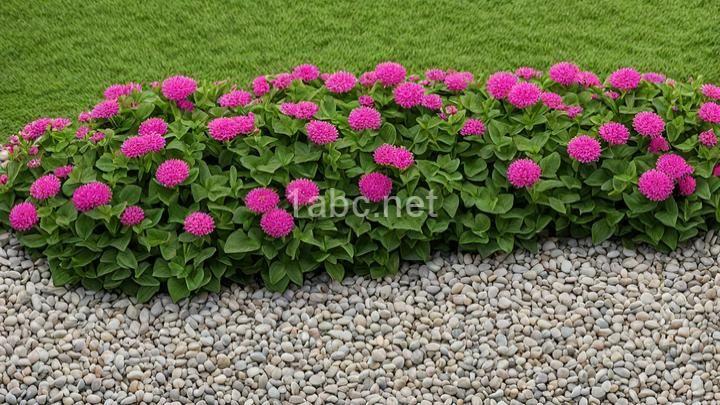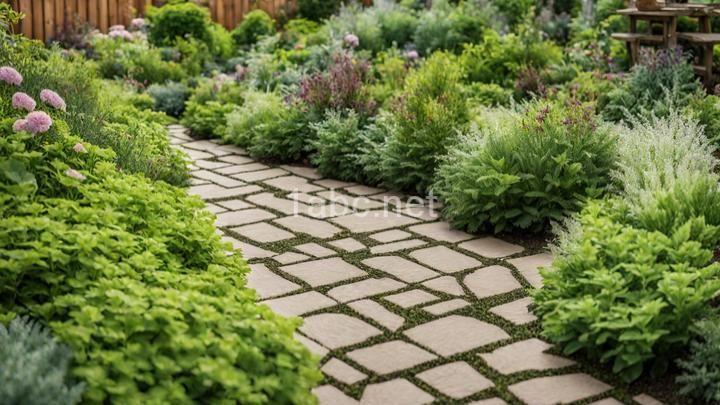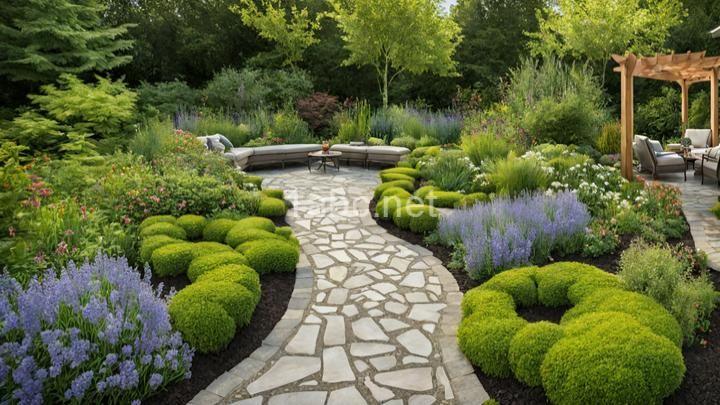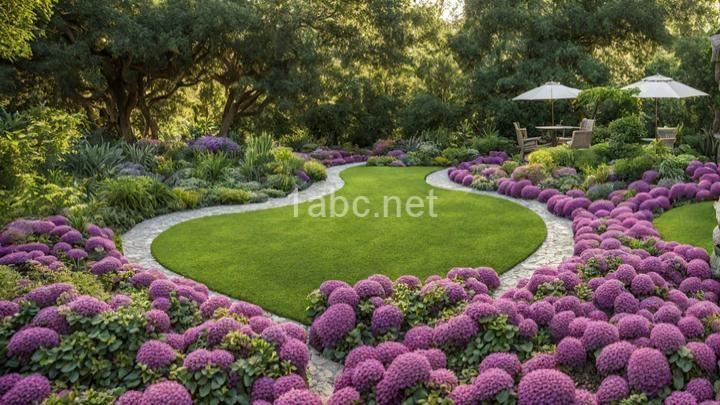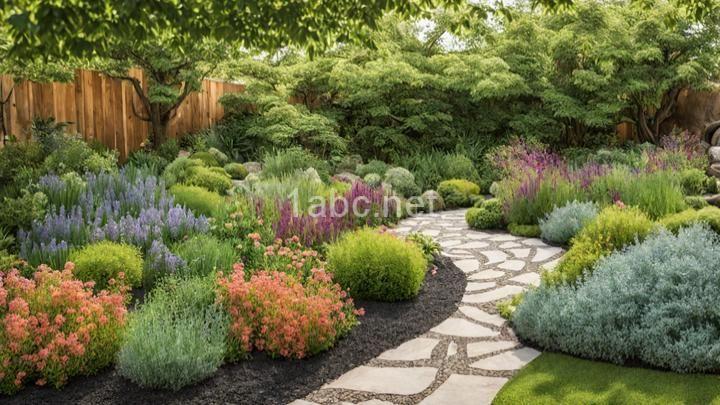Choosing the Right Ground Covers for Different Areas of Your Garden
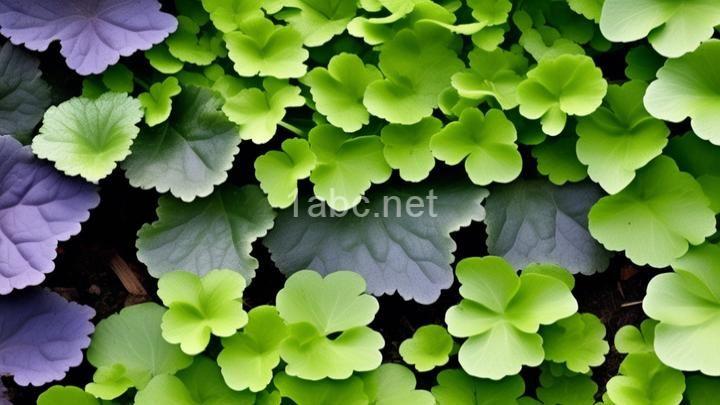
Introduction:
Welcome to our guide on choosing the perfect ground covers for various areas in your garden! Whether you have a sunny patch, a shady corner, or a high-traffic area, we've got you covered. In this blog, we will explore different types of ground covers that suit specific garden spaces. Let's dive in!
I. Sun-Loving Ground Covers:
When it comes to selecting ground covers for areas that receive full sun, it's essential to choose options that can thrive in these conditions. The intense heat and direct sunlight can be challenging for some plants, so it's crucial to pick the right ones.
One popular choice for sun-loving ground covers is creeping thyme. This beautiful herb not only adds a splash of color to your garden but also releases a delightful fragrance when you walk on it. Sedum is another fantastic option that comes in various colors and forms, making it a versatile choice for sunny areas. Creeping phlox, with its pretty blooms and ability to spread quickly, is another great choice for filling in bare spots and creating a vibrant carpet of flowers.
To ensure the success of your sun-loving ground covers, make sure to plant them in well-draining soil and provide them with regular watering during dry spells. Pruning and trimming them back after flowering can also help promote healthy growth.
II. Shade-Tolerant Ground Covers:
Gardening in shady areas can be quite challenging, as many plants struggle to thrive without adequate sunlight. However, there are plenty of shade-tolerant ground covers that can bring life to those darker corners of your garden.
Hostas are a popular choice for shade gardens due to their wide variety of foliage colors and textures. These plants can add depth and visual interest to your garden, even in areas with minimal sunlight. Ferns are another fantastic option, with their elegant fronds and ability to create a lush, tropical feel. Ajuga, or bugleweed, is a low-growing ground cover that thrives in shade and offers beautiful flowers in various shades of blue and purple.
When designing a shade garden, consider using a mix of different textures and colors to create a visually appealing space. Combining plants with different leaf shapes and sizes can add depth and dimension to your garden.
III. High-Traffic Ground Covers:
If you have areas in your garden that experience heavy foot traffic, it's essential to choose ground covers that can handle the wear and tear. These resilient plants can withstand the constant trampling and still maintain their beauty.
Creeping juniper is an excellent choice for high-traffic areas, as it can tolerate both sun and shade. Its dense, low foliage provides an attractive ground cover while also acting as a natural weed suppressor. Mondo grass, also known as monkey grass, is a hardy option that can handle foot traffic and is resistant to many common garden pests. Clover is another durable ground cover that can withstand heavy use and also provides nitrogen to the soil, benefiting other plants in your garden.
To establish and care for high-traffic ground covers, regular watering and occasional trimming may be necessary. It's also essential to keep an eye out for any signs of damage or disease and address them promptly to ensure the continued health of your ground covers.
IV. Erosion Control Ground Covers:
In sloping or hilly landscapes, erosion control becomes a crucial consideration. Choosing the right ground covers can help prevent soil erosion and protect your garden from the damaging effects of water runoff.
Vinca minor, also known as periwinkle, is an excellent choice for erosion control. Its dense mat-like growth helps stabilize the soil and prevents erosion. Crown vetch is another effective option, with its vigorous growth and ability to fix nitrogen in the soil. Creeping buttercup, with its bright yellow flowers and extensive root system, can help hold the soil together on slopes.
Proper planting techniques are essential for effective erosion control. Make sure to prepare the soil adequately before planting and consider using erosion control blankets or geotextiles to help stabilize the soil. Watering regularly, especially during dry spells, will also help establish the ground covers and prevent erosion.
V. Low-Maintenance Ground Covers:
For those who prefer a more hands-off approach to gardening, low-maintenance ground covers are the way to go. These plants require minimal care and still provide a beautiful and lush garden.
Lamb's ear, with its soft and fuzzy silver leaves, is a popular choice for low-maintenance gardens. It requires very little water and can handle a wide range of soil conditions. Ice plant, with its vibrant flowers and succulent-like foliage, is another low-maintenance option that thrives in sunny areas. Moss varieties, such as Irish moss or Scotch moss, are excellent choices for shady areas and add a touch of green to your garden with minimal effort.
To reduce maintenance efforts, consider grouping low-maintenance ground covers together in areas where you want to minimize weed growth. Mulching around these plants can also help retain moisture and reduce the need for frequent watering. Regularly removing any weeds or unwanted plants will keep your low-maintenance ground covers looking their best.
VI. Wildlife-Friendly Ground Covers:
Creating a garden that attracts beneficial wildlife is not only beneficial for the environment but also adds an element of beauty and harmony to your space. By incorporating wildlife-friendly ground covers, you can create a welcoming habitat for bees, butterflies, and other pollinators.
Clover is an excellent choice for attracting pollinators, as it produces abundant nectar-rich flowers that bees and butterflies love. Creeping thyme not only provides beautiful ground cover but also attracts pollinators with its fragrant flowers. Sweet woodruff is another option that releases a pleasant scent and attracts insects, including bees and butterflies.
To create a wildlife-friendly garden, avoid using pesticides and incorporate a variety of native plants. Providing water sources, such as a birdbath or shallow dish with pebbles, can also attract birds and other wildlife to your garden.
Conclusion:
Choosing the right ground covers for different areas of your garden is essential for creating a beautiful and functional space. Whether you have a sunny patch, a shady corner, or a high-traffic area, there are options available to suit your needs. By selecting appropriate ground covers, you can enhance the overall beauty of your garden while also providing practical benefits such as erosion control and attracting beneficial wildlife.
We hope this guide has provided you with valuable insights and inspiration for your garden. Remember to consider the specific conditions of your garden, such as sun exposure and foot traffic, when selecting ground covers. If you have any further questions or need more gardening tips, feel free to explore our website for more resources.
Happy gardening!
FREQUENTLY ASKED QUESTIONS
Why should I consider using ground covers in my garden?
There are several reasons why you should consider using ground covers in your garden. Ground covers are low-growing plants that spread out and cover the soil, creating a carpet-like effect. Here are some benefits of using ground covers:
-
Weed suppression: Ground covers help to suppress the growth of weeds by competing for space, light, and nutrients. This reduces the need for frequent weeding and minimizes weed competition with your desired plants.
-
Erosion control: Ground covers help to stabilize the soil and prevent erosion. Their dense root systems hold the soil in place, especially on slopes or areas prone to erosion.
-
Moisture retention: Ground covers act as a natural mulch, helping to retain moisture in the soil. This can be especially beneficial in dry or arid climates, as it reduces water evaporation and the need for frequent watering.
-
Soil improvement: Some ground covers, such as clover or nitrogen-fixing plants, can help improve the soil by adding nutrients and organic matter. This enhances soil fertility and overall plant health.
-
Aesthetics: Ground covers add beauty and visual interest to your garden. They come in a variety of colors, textures, and heights, allowing you to create a visually appealing landscape. They can also fill in empty spaces or bare areas, creating a more cohesive and well-designed garden.
When choosing ground covers, consider factors such as your climate, soil type, and the specific needs of your garden. It's important to select ground covers that are well-suited to your specific conditions to ensure their success.
How do I choose the right ground cover for my garden?
Choosing the right ground cover for your garden can greatly enhance its overall aesthetic appeal and functionality. Here are some factors to consider when making your selection:
-
Purpose: Determine the purpose of the ground cover. Are you looking for something that will provide erosion control, prevent weed growth, or simply add beauty to your garden?
-
Growing conditions: Assess the growing conditions in your garden, such as the amount of sunlight, soil type, and moisture levels. Different ground covers thrive under specific conditions, so it's essential to choose one that suits your garden's environment.
-
Maintenance: Consider the level of maintenance you are willing to undertake. Some ground covers require regular pruning, watering, or fertilizing, while others are low-maintenance and require minimal care.
-
Foot traffic: If your garden receives a lot of foot traffic, opt for a ground cover that can withstand heavy use without getting damaged or trampled.
-
Aesthetic appeal: Choose a ground cover that complements the overall design and style of your garden. Consider the colors, textures, and heights of the plants to create an aesthetically pleasing and cohesive look.
-
Native plants: Consider using native plants as ground covers. They are well-adapted to the local climate and can provide important habitat and food sources for local wildlife.
-
Compatibility with other plants: Ensure that the ground cover you choose is compatible with the other plants in your garden. Some ground covers may compete with or overshadow other plants, so it's important to select ones that coexist harmoniously.
-
Research: Take the time to research different types of ground covers and their specific characteristics. Look for reviews, consult gardening experts, or visit local nurseries for advice and recommendations.
By considering these factors, you can choose the right ground cover for your garden that not only meets your needs but also enhances the overall beauty and functionality of your outdoor space.
Can ground covers be used in different areas of the garden?
Yes, ground covers can be used in different areas of the garden. Ground covers are low-growing plants that spread and cover the ground, providing an attractive and functional alternative to traditional grass lawns. They can be used in various areas of the garden, such as pathways, borders, slopes, and spaces where grass is difficult to grow.Ground covers serve multiple purposes. They help to control erosion, prevent weed growth, and reduce the need for mowing and maintenance. Additionally, they can add visual interest and texture to the garden, as they come in a wide range of colors, leaf shapes, and growth habits.
When selecting ground covers for different areas of the garden, it's important to consider factors such as sunlight exposure, soil type, and moisture levels. Some ground covers prefer full sun, while others thrive in shady or partially shaded areas. Likewise, certain ground covers are better suited to well-drained soil, while others can tolerate wet or poor soil conditions.
Some popular ground cover options include creeping thyme, creeping phlox, ajuga, vinca minor, and sedum. These plants are known for their ability to spread and form dense mats, effectively covering the ground and suppressing weeds.
In conclusion, ground covers can be a versatile addition to any garden, with their ability to thrive in different areas and provide a range of benefits. When choosing ground covers, it's important to consider the specific needs and conditions of each area in order to achieve the best results.
Are there any ground covers that are particularly good for suppressing weeds?
Yes, there are several ground covers that are especially effective at suppressing weeds. One option is using mulch, such as wood chips or straw, as a ground cover. Mulch helps to smother weeds by blocking sunlight and preventing them from germinating. Another option is planting dense ground cover plants, such as creeping thyme or creeping Jenny. These plants spread quickly and form a thick mat that chokes out weeds. Additionally, using a ground cover fabric or landscape fabric can help to suppress weeds by preventing them from growing through the fabric. These fabrics allow water and nutrients to reach the plants while blocking weed growth. Overall, choosing the right ground cover can significantly reduce the amount of time and effort required to maintain a weed-free garden.
